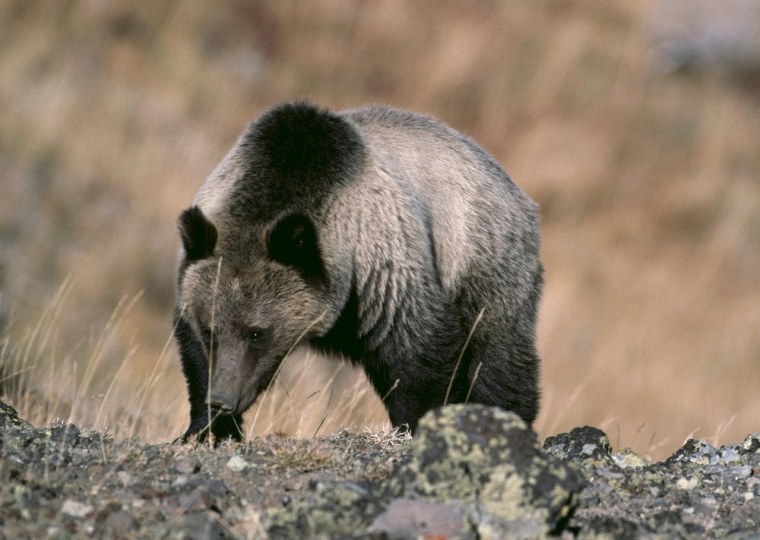Grizzly bear deaths neared record levels for the region around Yellowstone National Park in 2010, but government biologists said the population remains robust enough to withstand the heavy losses.
An estimated 75 of the protected animals were killed or removed from the wild, according to a government-sponsored grizzly study team. That equates to one grizzly gone for every eight counted this year in the sparsely populated Yellowstone region of Montana, Wyoming and Idaho.
The deaths were blamed primarily on grizzlies pushing into inhabited areas, where bears get into trouble as they search out food in farmyards and from the big game herds also stalked by hunters. Despite those conflicts, researchers recently reported the population topped 600 animals for the first time since grizzly recovery efforts began in the 1970s.
"The population will continue to grow with the mortalities we're seeing now," said Chris Servheen, grizzly bear recovery coordinator for the U.S. Fish and Wildlife Service.
Trapped and hunted to near-extermination last century, grizzly numbers have slowly rebounded since they were declared a threatened species in 1975.
An estimated 1,500 of the animals now roam woodlands and mountain ranges in the northwestern U.S. and the adjacent Canadian provinces of British Columbia and Alberta. The Yellowstone-area population is one of the largest concentrations of the species in the lower 48 states.
In 2008, an estimated 79 Yellowstone-area grizzlies died or were removed — the most since they were listed as threatened. Deaths declined in 2009 before spiking again this year.
Most of the bears were killed by wildlife agents or hunters after attacking livestock, acting aggressively toward humans, damaging property or seeking human food.
Only three natural deaths were recorded.
"In general, if you were going to make a bet on whether a bear died because of people versus natural causes, it would be people," said Chuck Schwartz, a U.S. Geological Survey biologist who leads the multi-agency grizzly bear study team. "Eighty-five-plus percent of independent bears that die, die because of people," he added.
Hunting grizzlies remains illegal, but at least 15 were killed this year by hunters who shot them in self-defense or after mistaking them for black bears.
Over the summer, two adult bears were killed by government wildlife agents after the animals attacked and killed humans — the first fatal maulings in decades in the region. Three cubs captured after one of those attacks, near Cooke City, Mont., were later placed in a Billings zoo.
The deaths included an estimated 47 adult male bears — roughly twice the number of deaths the government considers sustainable. Female and cub deaths were within sustainable limits.
The male grizzly mortality threshold must be exceeded three years in a row to trigger an official review of government management practices. Nevertheless, Schwartz said representatives of state and federal agencies will meet in the spring to decide what additional steps could be taken to curb bear deaths.
The estimate of 75 dead or removed bears comes from extrapolations by researchers who assume not all deaths are recorded. Forty-seven deaths and removals were listed as "known and probable," generally meaning there was either a carcass or other evidence of dead bear.
The rise in bear deaths in 2010 coincided with a recent decline in two dietary staples for some Yellowstone bears — cutthroat trout and nuts from whitebark pine cones. The trout are being crowded out by nonnative fish, while whitebark pine has been ravaged by pine beetles that have thrived in recent years with milder winters.
Government scientists contend grizzly bears can adapt by eating more elk and other alternative foods. But wildlife advocates say their future is at risk if food supplies continue to diminish.
"You combine that with the (human) population growth in the region and it seems pretty likely this is going to be more of a recurring theme," said Jeff Welsch with the Greater Yellowstone Coalition.
The divergent views on the long-term risks faced by bears are at the heart of a legal debate over how much protection should be given to the species.
Confident the population won't crash, government officials plan to continue their push next year to remove Yellowstone-area grizzlies from the threatened species list.
A 2007 attempt to lift protections for the bears was overturned by a judge in Missoula last year. The government appealed that ruling and the case is pending before the 9th U.S. Circuit Court of Appeals.
